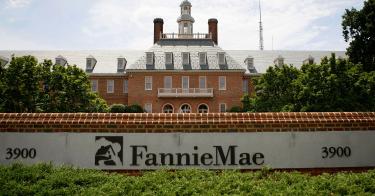As the housing bubble burst in 2008, mortgage giants Fannie Mae and Freddie Mac careened towards insolvency. Rather than let them go under, Washington placed both these government sponsored enterprises under conservatorship and provided a series of generous bailouts. Now private shareholders eagerly anticipate an emergence from conservatorship.
But first, Fannie and Freddie must repay taxpayers for these bailouts and rebuild their reserves against future losses, a task requiring $400 billion in capital. The mortgage giants understandably want to get out from under those obligations, so now they are seeking two more gifts from Uncle Sam. First, debt forgiveness or the “liquidation preference” and second, a rollback of dividend requirements. These stealth bailout proposals are potentially larger than those of the past decade. That is saying a lot.
In 2009, the Treasury gave both Fannie and Freddie open credit lines of $200 billion to cover possible losses. The Treasury then announced that any funds needed in the next three years would not count against these caps. The Treasury and the Federal Reserve also purchased trillions of dollars of their obligations, staving off further losses that would have required even more bailouts. To compensate taxpayers for the bailouts, Fannie and Freddie issued special preferred stock to the Treasury.
Dividends were set at 10 percent of the balance, two points less than the average annual return on equity by banks during the last 30 years. But Fannie and Freddie struggled to pay even these modest dividends. From the end of 2008 through the end of 2011, they borrowed $36 billion from Treasury to make these dividend payments. Concern grew that they would max out their credit lines to stay current with dividends, setting the stage for still another bailout as Treasury replaced the 10 percent dividends with a “net worth sweep” for every quarter starting in 2013.
Proponents of the bailout this year push note that Fannie and Freddie have borrowed $192 billion since 2008, yet have paid $305 billion in dividends. It is fair, they say, to forgive some of the debt and lower the dividend requirements. This argument, however, does not distinguish between the return on an investment and the investment itself. Those dividends paid on cash infusions and the open $445 billion credit line are far from extraordinary. If you account for all the economic risks associated with the bailouts, the true costs of intervention are more than double the value of cash infusions. The dividends merely compensate taxpayers for the risks incurred. The outstanding balance remains until Fannie and Freddie repay the principal. Some identify the net worth sweep, rather than preferred stock dividends, as the culprit preventing recapitalization.
At first glance, this argument bears credence. Sweeping net worth every quarter does prevent Fannie and Freddie from rebuilding the required capital amount. From 2013 through the third quarter of 2019, the net worth sweep produced $123 billion in excess dividends relative to the fixed rate dividend formula. However, this boon proved temporary. From 2015 through the third quarter of 2019, the sweep yielded $9 billion less in dividends relative to the 10 percent fixed rate on the same balance. In 11 out of the last 19 quarters, dividends under the net worth sweep have fallen short of what they would have been under the prior fixed rate.
In other words, reliance on credit lines to pay fixed dividends would still be a valid concern. The bottom line is that neither the 10 percent fixed dividend rate nor the net worth sweep represent exorbitant payouts. Without all the federal support, Fannie and Freddie would have failed to make even these modest dividends. Suspending the current dividend requirements, instituting a fixed rate below the typical return on equity, and reclassifying a portion of these required dividends paid as principal repayment each amounts to yet another bailout for these corporations.
There is a better alternative, and that is to liquidate Fannie and Freddie. Competitive businesses that operate without government guarantees or subsidies can again provide the bulk of housing finance since after all, the home ownership rate today is almost identical to what it was in the 1960s, before the government plunged into housing finance in a big way. Good intentions aside, this politically driven overallocation of capital coincided with home prices increasing at more than four times the rate of inflation before the bubble burst in 2008. Shrinking the federal footprint will help diminish risk while gradually returning affordability to the housing market. What is needed is substantive reforms, not ever more creative bailouts.
This piece originally appeared in The Hill on 12/2/2019



